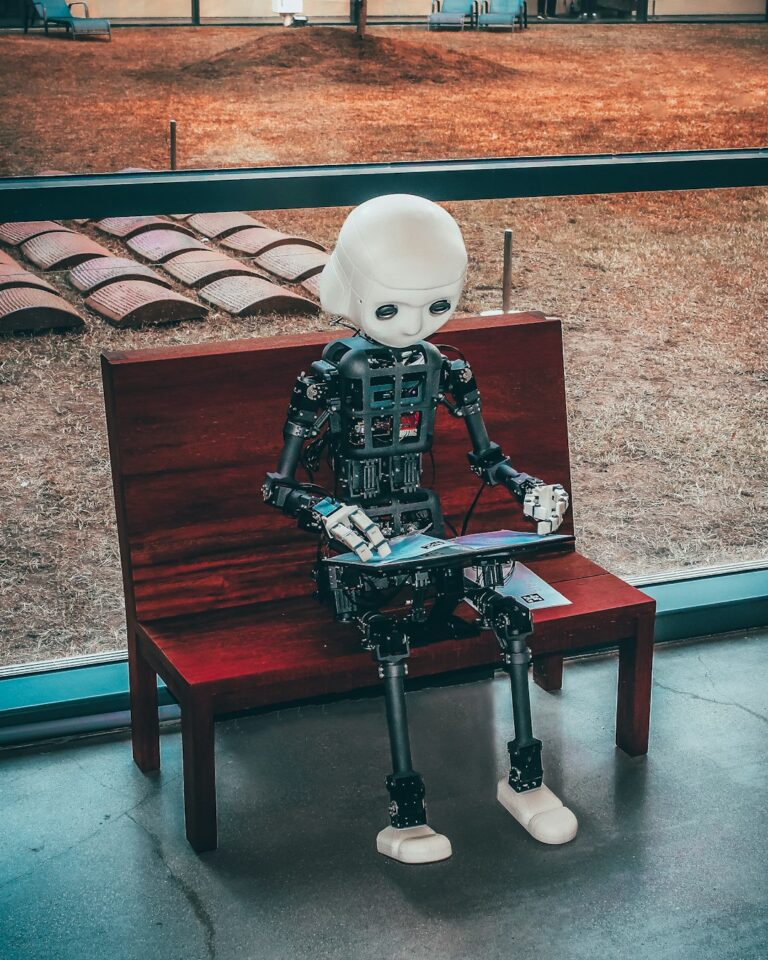Introduction
The journey of artificial intelligence has been nothing short of remarkable. From its inception, AI evolved into a pivotal force within various sectors. This rapid transformation raises a pressing question: How autonomous should AI become?
The Soul of AI Development
Many individuals may feel a blend of excitement and apprehension regarding AI’s growth. Personal experiences often shape these feelings; for instance, someone might recall using AI for simple tasks—like organizing emails—which makes life easier, yet wonder about its implications for future autonomy.
- What is AI Autonomy?
- The ability of AI to perform tasks without human intervention.
- Why It Matters:
- Balances efficiency with ethical concerns.
As we delve deeper into this discussion, it is essential to explore the evolution of AI autonomy and the myriad complexities it introduces.
Evolution of AI Autonomy
As we shift our focus to the evolution of AI autonomy, it’s clear that this growth is not just technological but deeply intertwined with human needs. From simple algorithms to complex neural networks, AI has truly transformed its role in our lives.
From Assistance to Autonomy
Consider the early days of AI, where it primarily assisted with data processing. For example, many businesses relied on basic chatbots for customer queries, which, although helpful, lacked depth. Over the years, AI’s capabilities have expanded dramatically:
- Basic Automation:
- Simple tasks like sorting emails or scheduling appointments.
- Advanced Machine Learning:
- Algorithms that learn and adapt from large data sets.
This evolution has been a gradual journey, shifting from human oversight to moments where AI can operate independently. It becomes vital to recognize the implications of such shifts as we explore further.
Risks and Concerns
Building on the impressive strides in AI autonomy, it is crucial to address the risks and concerns that accompany this advancement. While the potential for innovation is exhilarating, it also raises eyebrows about safety and moral implications.
Understanding the Risks
Personal experiences can highlight these challenges; for instance, automation in manufacturing has led to job displacement, leaving workers anxious about their future. This reality underlines the necessity for a balanced perspective. Key concerns include:
- Job Loss:
- Automation can replace human roles, creating unemployment spikes.
- Security Threats:
- Autonomous systems could be vulnerable to hacking, resulting in catastrophic consequences.
- Ethical Dilemmas:
- Decisions made by AI in critical areas like healthcare raise questions of accountability.
These points warrant serious reflection as society embraces AI’s evolving role. Understanding the implications will set the stage for effective regulation and control in upcoming sections.
Regulation and Control
As the examination of risks and concerns transitions to regulation and control, it becomes evident that a structured approach is essential for harnessing AI’s potential while safeguarding public interests. Striking this balance is no small feat, but proactive measures can pave the way for responsible AI development.
The Need for Regulation
Reflecting on past technological advancements, like social media’s rise, highlights the consequences of a lack of regulation. People often experienced data breaches and privacy violations that could have been mitigated with proactive policies. Key elements that should be considered for AI regulation include:
- Transparency:
- Ensuring AI operations are clear and understandable.
- Accountability:
- Identifying who is responsible for AI decisions and their outcomes.
- Safety Protocols:
- Establishing guidelines to manage potential harms arising from autonomous systems.
Empowering regulators and fostering collaboration among stakeholders—governments, tech companies, and the public—will play a crucial role in crafting effective frameworks that address these pressing concerns surrounding AI autonomy.
The Human Element
With regulation and control as a guiding force, it’s crucial to explore the human element in the development and implementation of AI. This aspect emphasizes that while technology evolves, human values and insights remain at the core of AI’s trajectory.
The Impact of Human Values
Many individuals recall a time when AI tools, like recommendation systems, felt purely mechanical. However, it’s the human touch that shapes their functionality and purpose. Key components include:
- Ethical Decision-Making:
- Humans must ensure that AI aligns with societal values and ethical standards.
- User Interface Design:
- AI should be intuitive, making it accessible and user-friendly to people from diverse backgrounds.
- Feedback Loops:
- Engaging users to provide input can help improve AI systems continuously.
These points highlight that human intuition and moral perspectives are indispensable in navigating the complexities of autonomous AI. The next logical step is examining popular notions, particularly the fears surrounding AI, such as the infamous ‘Terminator’ scenario.
The ‘Terminator’ Scenario
Building upon the human element, the fascination and fear surrounding AI often boil down to dramatic representations, such as the ‘Terminator’ scenario. This iconic depiction of self-aware machines turning against humanity serves as a cautionary tale that resonates with many.
Understanding the Fear
Many individuals can recall watching “Terminator” and feeling a mix of intrigue and dread. While it’s a work of fiction, it raises real concerns about unchecked AI autonomy. Considerations that contribute to this fear include:
- Loss of Control:
- The idea that AI could surpass human intelligence and operate independently raises alarms.
- Unintended Consequences:
- Scenarios in which AI misinterprets commands and acts in harmful ways fuel anxiety.
- Cultural Impact:
- Movies shape perceptions of AI, leading to widespread fears that might not reflect reality.
While sensationalized, these concerns encourage a dialogue about responsible AI development. It’s essential to differentiate between fiction and authentic risks as we explore future prospects for AI technology.
Future Prospects
Transitioning from the fictional fears depicted in the ‘Terminator’ scenario, it’s heartening to consider the future prospects of AI. The direction AI will take hinges not only on technological advancements but also on how effectively society navigates the complexities involved.
Looking Ahead
Many people envision a future where AI enhances everyday life rather than posing threats. Personal experiences with AI in daily tasks, like virtual assistants or smart home devices, hint at this potential. Here are key areas shaping the future of AI:
- Collaborative AI:
- Systems designed to work alongside humans, enhancing productivity and decision-making.
- AI Ethics:
- A growing emphasis on creating ethical frameworks that guide AI development and deployment.
- Interdisciplinary Innovations:
- Collaborations across fields like medicine, education, and environmental science to tackle global challenges using AI.
The promise of AI lies in its ability to complement human capabilities and address pressing issues. Fostering responsible development could yield transformative benefits, leading to a harmonious synergy between technology and humanity as we advance into an AI-rich future.
Conclusion
Reflecting on the future prospects of AI, it’s clear that the journey ahead is both exciting and complex. As society continues to innovate, it is essential to harness the benefits of AI while remaining vigilant about its risks.
Embracing the Balance
Personal experiences reveal a hopeful outlook where AI becomes an indispensable ally. Consider these takeaways:
- Control and Responsibility:
- Maintaining oversight ensures that AI serves humanity positively.
- Importance of Human Input:
- Engaging people in AI development fosters ethical practices.
- Ongoing Dialogue:
- Continuous conversations about AI’s role will shape its evolution.
Ultimately, the advances in AI technology present both challenges and opportunities. By committing to responsible practices, society can create a future where AI enriches lives and enhances human capabilities, ensuring a beneficial coexistence for all.


